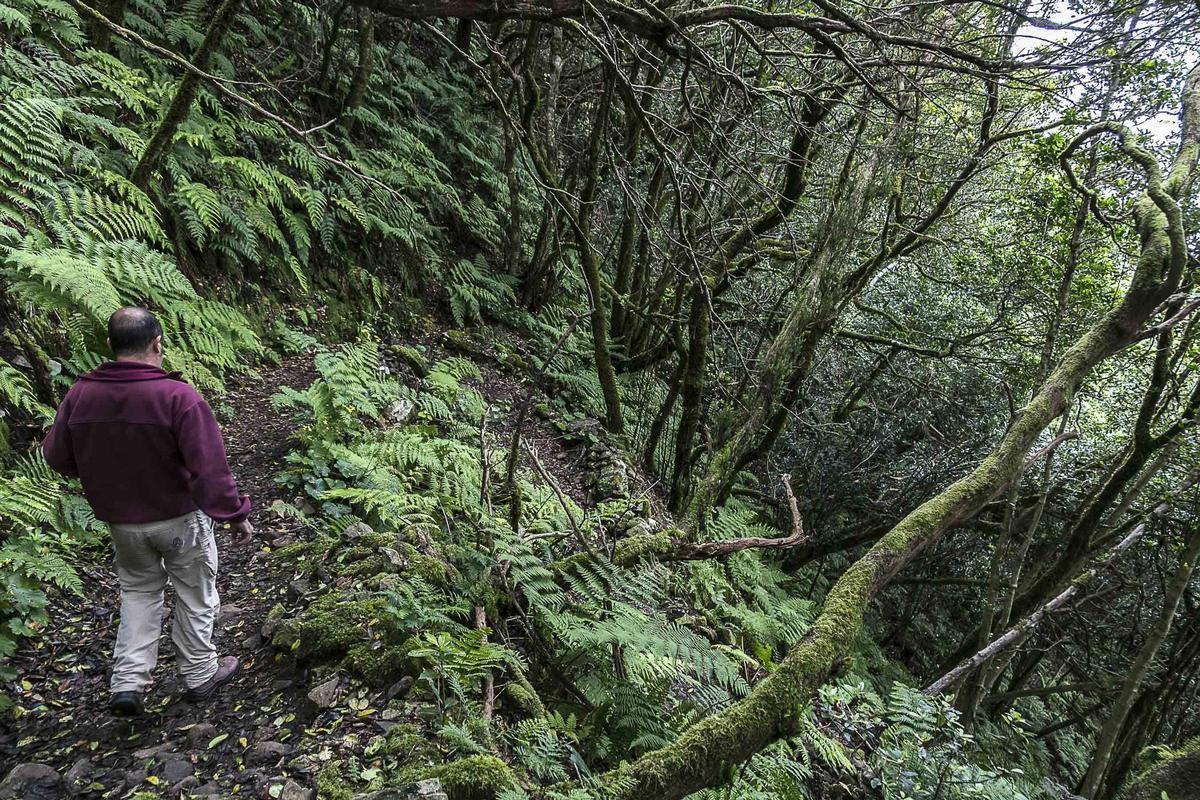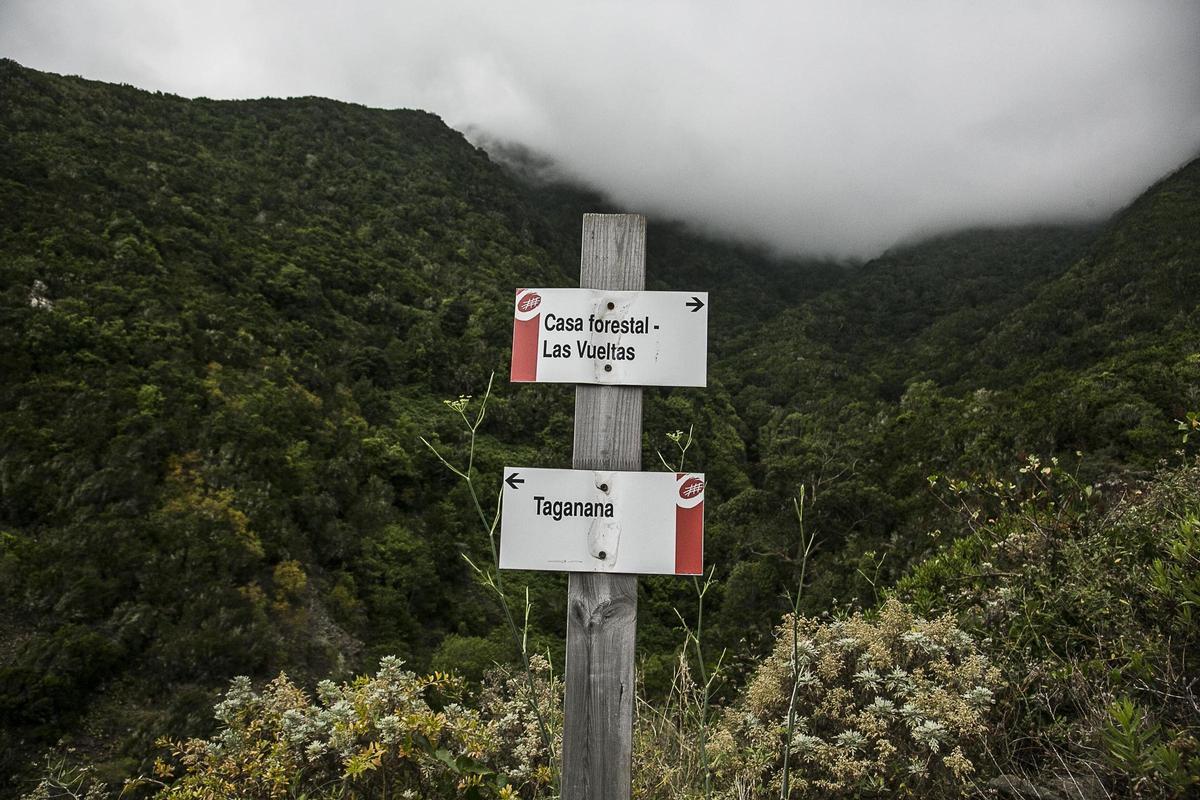Tenerife is the island with the most rescues related to outdoor activities in the Archipelago. Last year, a total of 132 rescue operations were recorded, 110 by land and 22 by sea. The Anaga and Teno massifs and the Teide National Park gather the highest number of cases, all due to the high number of visitors. However, Anaga is becoming the main focus of incidents in recent months: it accounts for 24% of the rescue team interventions since November, one in four.
Most cases are due to recklessness. The massif shared by the municipalities of Santa Cruz de Tenerife, La Laguna, and Tegueste, already overcrowded by local and tourist visits, has also become the best alternative for mountain and sea activity enthusiasts who used to enjoy other spaces.
Many hikers, for example, prefer the paths of Anaga over those affected by the fire that devastated the pine forests of the Corona Forestal last summer. It’s not only that the fire left devastating landscapes in the Corona Forestal. More than six months after the fire broke out in the highlands of Arafo, 27 trails and forest paths, as well as 5 recreational areas, remain closed.
Recklessness is behind the majority of rescue cases in Anaga
[–>
Those rescued by the emergency 112 service are usually not locals. In most cases, they are tourists aged between 50 and 70 who do not plan their outings well and venture into unfamiliar terrain. Anaga has very tough trails that pose a high risk if not planned properly. They are rescued because many parts of Anaga have telephone coverage.
Jorge Parra, technician at the General Directorate of Emergencies of the Canary Islands Government, points out that except for areas like Las Palmas de Anaga and Roque Bermejo, most accidents occur in areas of the massif with good coverage. Telecommunications are not the problem. “Hikers send their coordinates and we deploy the teams, which often include helicopters,” he explains.

Hiking in Anaga. / El Día
The Biosphere Reserve welcomed over 100,000 visitors last year, and that number is expected to increase in 2024. Javier Tejera, director of the Anaga Biofest festival, states that “the figures show an increase in people’s need to connect with nature and a greater interest in outdoor activities since the end of the lockdown due to COVID-19.”
In most cases, they are tourists aged between 50 and 70 who do not plan their outings well and venture into unfamiliar terrain
[–>
The forest fire last summer has also been considered a reason for this increase in visitors to Anaga. “The forest fire may have had an influence, but it cannot be quantified,” highlights Jorge Parra. Its location, just a few minutes from the capitals of Santa Cruz and La Laguna, along with its unique landscape and numerous trails, make the Anaga massif particularly attractive for outdoor activities. Therefore, Parra refers to this area as an “peri-urban park”. There are several characteristics that make it stand out beyond its strategic location.
The preservation, so far, of a social and ethnographic wealth provides trails, viewpoints, and villages immersed in the humidity and lushness provided by the laurel forest, mountains that are only preserved on the Macaronesia islands. Thanks to these characteristics, Tejera points out that “Anaga has become a more touristic attraction”.
The recent accidents that occurred in the Anaga mountains were near Benijos, on the Punta del Hidalgo-Chinamada trail, and at Roque de Taborno. These are areas known for their scenic value and vast biodiversity, which are especially frequented due to well-conditioned trails.
The majority of visitors travel there in private vehicles, many of them rented ones
[–>
These cases matched the profile of the injured individuals: tourists over 50 with injuries.
Staying Safe While Hiking in Anaga
Many accidents occur due to falls from veering off the trail and not following the recommended precautionary measures advised by specialists, such as familiarising oneself with the terrain or wearing appropriate gear, especially in terms of footwear and clothing.
The More Visitors, the More Rescues. The director of the Anaga Biofest festival clarifies that “treating natural spaces as tourist resources rather than fragile places to care for and preserve poses a threat to their upkeep.” Tejera is firm in addressing tourist saturation and suggests “setting limits.”
The majority of visitors travel there in private vehicles, many of which are rentals. This leads to traffic congestions on access roads and a feeling of overcrowding. Many visits are for recreational and leisure purposes. Tejera even mentions a “calling effect due to the spectacular nature and the perception of this natural space as an attraction.”
Chano Gil, President of the Tenerife Mountaineering Federation, attributes hikers’ incidents to recklessness. They face challenges for which they are unprepared and are unfamiliar with the area. “Despite the overall good condition of the Anaga trail network, the issue is that many people see nature as an amusement park,” emphasizes the mountaineer.

Trail signs in Anaga. / El Día
Chano Gil recommends three key factors to consider for safely engaging in this outdoor activity. Firstly, individuals must be in good physical condition and free from heart conditions or mobility limitations. Additionally, the right equipment is crucial: suitable mountain footwear, loose clothing, water, and food including nuts and sugary snacks. Lastly, having information is essential. The mountaineer stresses the importance of “knowing the trail routes and having good environmental education.”
Another recommendation from Chano Gil is to use the Cabildo Tenerife On app. Launched in 2022, it provides all nature leisure information with alerts and updates on trail conditions and tips for their proper use. It has garnered over 10,000 downloads to date.
Basic Tips for Hiking
Knowing Your Limits
Those engaging in physical activities in nature must understand their capabilities and avoid situations that endanger their health.
Planning the Activity
Setting the departure and arrival times for the activity location is crucial, assessing its difficulty level and the duration of the route.
Checking Weather Conditions
It’s important to check the weather conditions in advance, including any weather alerts in place.
Appropriate Gear
Gear should be tailored to the location’s circumstances. Footwear should be suitable, and clothing loose and weather-appropriate. It’s advisable to always carry warm clothing in humid areas like Anaga, where temperatures can drop suddenly. It’s also essential to carry water and food, including nuts and sugary snacks.
















